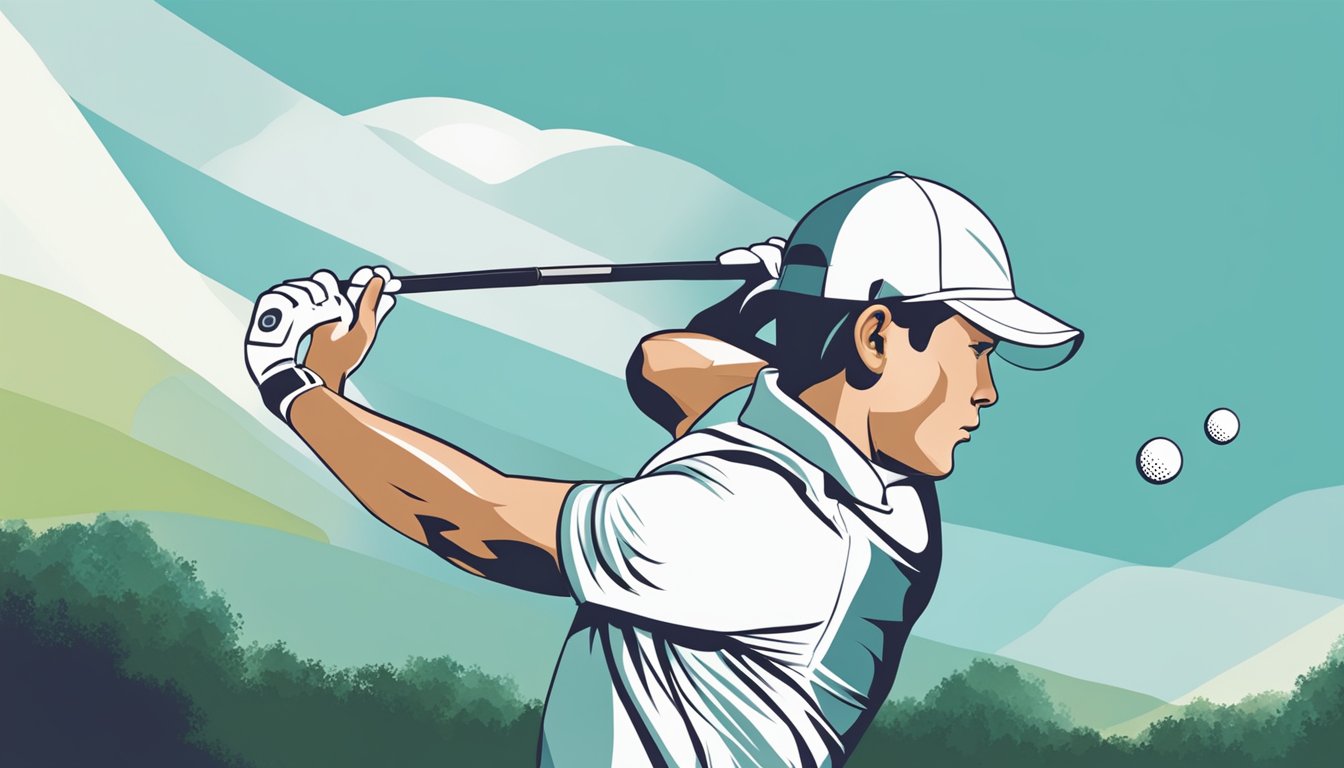If you’re looking to hit longer drives off the tee, choosing the right driver loft is essential. The loft of a driver is the angle between the clubface and the shaft. It determines the trajectory of the ball and affects the amount of backspin and sidespin on the ball.


Understanding driver loft and its impact on ball control is critical to selecting the right driver loft for distance. The general rule of thumb is that the slower your swing speed, the higher the loft you should select. Conversely, the faster your swing speed, the lower the loft you should choose. But there are many other factors to consider when selecting the right loft, including your launch angle, spin rate, and ball speed.
Key Takeaways
- The loft of a driver affects the trajectory of the ball and the amount of backspin and sidespin on the ball.
- The slower your swing speed, the higher the loft you should select, and the faster your swing speed, the lower the loft you should choose.
- Factors such as launch angle, spin rate, and ball speed also play a crucial role in selecting the right driver loft for distance.
Understanding Driver Loft
https://www.youtube.com/watch?v=sVZCXWPxZvQ&embed=true
When it comes to choosing the right driver for your game, one of the most important factors to consider is the driver loft. The driver loft refers to the angle of the clubface in relation to the shaft of the club. The loft angle of a driver can range from 8 degrees to 14 degrees, with some drivers offering even more adjustability.
The loft angle of a driver can have a significant impact on the trajectory and distance of your shots. A lower loft angle will produce a lower ball flight with less spin, resulting in more distance. However, it can be more difficult to achieve optimal launch conditions with a lower loft angle, especially for golfers with slower swing speeds.
On the other hand, a higher loft angle will produce a higher ball flight with more spin, which can help golfers achieve optimal launch conditions and maximize distance. Golfers with slower swing speeds may benefit from using a driver with a higher loft angle, as it can help them achieve a higher launch angle and more carry distance.
It’s important to note that the best loft for a driver will vary depending on your individual swing characteristics and preferences. A driver loft chart can be a helpful tool for determining the ideal loft angle for your swing speed and launch conditions. However, it’s also important to experiment with different driver lofts to find the one that works best for you.
In addition to the loft angle, other factors to consider when choosing a golf driver loft include the clubhead design, shaft flex, and weight distribution. By taking all of these factors into account, you can find the right driver loft to help you hit longer, more accurate drives off the tee.
Factors Affecting Loft Selection
https://www.youtube.com/watch?v=qkvirvIAscQ&embed=true
When choosing the right driver loft for maximum distance, there are several factors to consider. Here are some of the most important ones:
Swing Speed and Angle of Attack
Your swing speed and angle of attack are critical factors that determine the optimal driver loft for you. Golfers with slower swing speeds typically benefit from higher driver lofts, while faster swingers usually require lower lofts. A slower swing speed combined with a downward angle of attack may require higher lofts to achieve optimal launch and distance. Conversely, a faster swing speed with an upward angle of attack may require lower lofts to achieve the same result.
Ball Trajectory and Distance
The trajectory of the ball and the distance it travels are also crucial factors in selecting the right driver loft. Golfers who tend to hit the ball low and with little spin may benefit from a higher lofted driver to increase launch and carry. Conversely, golfers who tend to hit the ball high and with too much spin may benefit from a lower lofted driver to reduce spin and increase roll.
Golfer’s Skill Level
Your skill level is an important consideration when selecting the right driver loft. High handicappers and amateur golfers may benefit from higher lofts to help them achieve maximum distance and forgiveness on off-center hits. Low handicappers and experienced golfers may prefer lower lofts for more control and workability.
Equipment Customization
Finally, equipment customization can play a significant role in selecting the right driver loft. New drivers with adjustable hosels and loft settings allow for more customization than ever before. A driver fitting with a professional can help determine the optimal loft for your swing and maximize your distance potential.
By considering these factors, you can select the optimal driver loft for your game and achieve maximum distance off the tee.
Impact of Loft on Ball Control
https://www.youtube.com/watch?v=HcTBZ8u5ZaM&embed=true
The loft of your driver can have a significant impact on your ball control. Higher lofted drivers can help you get the ball in the air more easily, but they can also create more spin, which can lead to a loss of control. Lower lofted drivers, on the other hand, can help you hit the ball farther with less spin, but they can also be more difficult to control.
If you tend to slice the ball, a higher lofted driver can help you reduce the amount of side spin on the ball, which can help you hit straighter shots. However, if you tend to hook the ball, a lower lofted driver may be a better option, as it can help you reduce the amount of spin on the ball and hit straighter shots.
Draw bias and slice bias are two terms that you may have heard when shopping for drivers. Draw bias means that the driver is designed to help you hit a draw, which is a shot that curves from right to left for a right-handed golfer. Slice bias means that the driver is designed to help you hit a slice, which is a shot that curves from left to right for a right-handed golfer.

If you struggle with accuracy, a driver with a higher degree of loft may be a good option for you. A higher lofted driver can help you hit the ball higher and straighter, which can lead to more accurate shots. Additionally, a driver with a draw bias can help you hit more accurate shots if you tend to slice the ball.
In conclusion, the loft of your driver can have a significant impact on your ball control. Higher lofted drivers can help you get the ball in the air more easily, but they can also create more spin, which can lead to a loss of control. Lower lofted drivers can help you hit the ball farther with less spin, but they can also be more difficult to control. If you struggle with accuracy, a driver with a higher degree of loft may be a good option for you. A driver with a draw bias can also help you hit more accurate shots if you tend to slice the ball.
Choosing the Right Loft
https://www.youtube.com/watch?v=NetMf9PaPy0&embed=true
When it comes to choosing the right loft for your driver, there are a few factors to consider. The loft of your driver can affect both the distance and trajectory of your drives.
Less loft on your driver can help you achieve more distance, but it can also make it harder to get the ball in the air. If you have a slower swing speed, a driver with a higher loft can help you get the ball in the air and achieve more carry. According to GolfSpan, a 10.5° driver loft is ideal for beginners and most golfers.

If you have a faster swing speed, you may benefit from a driver with less loft. According to ReachPar, golfers with swing speeds above 120mph may benefit from a driver with less than 9.5 degrees of loft.
When it comes to choosing a brand, there are many options available. Some popular brands include TaylorMade, Callaway, Ping, Cobra, Cleveland, and Tour Edge.
If you’re looking for a specific driver model, the Callaway Mavrik and Callaway Mavrik Max have received positive reviews for their distance and forgiveness. However, it’s important to remember that the best driver loft for distance will vary from golfer to golfer, depending on factors such as swing speed, angle of attack, and personal preference.
In summary, choosing the right loft for your driver depends on your swing speed, angle of attack, and personal preference. Less loft can help you achieve more distance, but it can also make it harder to get the ball in the air. A higher loft can help you get the ball in the air and achieve more carry. Popular brands include TaylorMade, Callaway, Ping, Cobra, Cleveland, and Tour Edge. The Callaway Mavrik and Callaway Mavrik Max have received positive reviews for their distance and forgiveness, but the best driver loft for distance will vary from golfer to golfer.
Conclusion


Choosing the best driver loft for distance is crucial for any golfer looking to improve their game. After considering various factors such as swing speed, launch angle, and spin rate, it is clear that the loft of the driver plays a significant role in achieving maximum distance off the tee.
When selecting a driver, it is important to consider the forgiveness and stability of the club. A forgiving driver will help you hit straighter shots even on off-center hits, while a stable driver will help you maintain control and accuracy throughout your swing. Additionally, a driver with a larger sweet spot will help you achieve maximum distance even on mishits.
Another important factor to consider is the weight distribution of the driver. A driver with a lower center of gravity will help you achieve a higher launch angle and lower spin rate, resulting in longer drives. Additionally, a driver with a higher energy transfer will help you transfer more power to the ball for maximum distance.
Overall, when selecting the best driver loft for distance, it is important to consider all of these factors and choose a driver that is forgiving, stable, and has a weight distribution that works for your swing. With the right driver, you can hit longer drives and improve your overall game.
Frequently Asked Questions
https://www.youtube.com/watch?v=0XDkqtQTC4E&embed=true
What is the most forgiving driver for distance?
The most forgiving driver for distance is one with a higher loft angle, which helps to increase the launch angle and reduce spin. This will help you to hit straighter shots with more distance. Drivers with adjustable weight technology can also help to increase forgiveness by allowing you to adjust the center of gravity to suit your swing.
What is the ideal driver loft for beginners?
For beginners, the ideal driver loft is around 10.5 degrees. This loft angle is forgiving and can help to produce a higher launch angle and more distance. As you improve your swing, you can experiment with lower loft angles to increase your distance.
What is the effect of lowering loft on driver distance?
Lowering the loft angle on a driver can increase the distance of your shots, but it can also reduce the forgiveness of the club. This means that it will be harder to hit straight shots. If you have a fast swing speed and are looking to maximize distance, a lower loft angle may be beneficial. However, if you have a slower swing speed, you may want to stick with a higher loft angle for more forgiveness.
What is the recommended driver loft for a high handicapper?
For a high handicapper, a driver loft of around 12 degrees is recommended. This loft angle will help to increase the launch angle and reduce spin, which will result in straighter shots with more distance. As you improve your swing, you can experiment with lower loft angles to increase your distance.
What is the best driver loft for hitting a 10.5 degree driver?
The best driver loft for hitting a 10.5 degree driver is around 10.5 to 11 degrees. This loft angle will help to produce a higher launch angle and more distance. If you have a fast swing speed, you may benefit from a lower loft angle, but if you have a slower swing speed, you may want to stick with a higher loft angle for more forgiveness.

Is an 8.5 degree driver hard to hit for distance?
An 8.5 degree driver can be harder to hit for distance, especially for golfers with slower swing speeds. This is because the lower loft angle can produce more spin, which can cause the ball to slice or hook. Golfers with faster swing speeds may benefit from an 8.5 degree driver, but it is not recommended for beginners or high handicappers.










